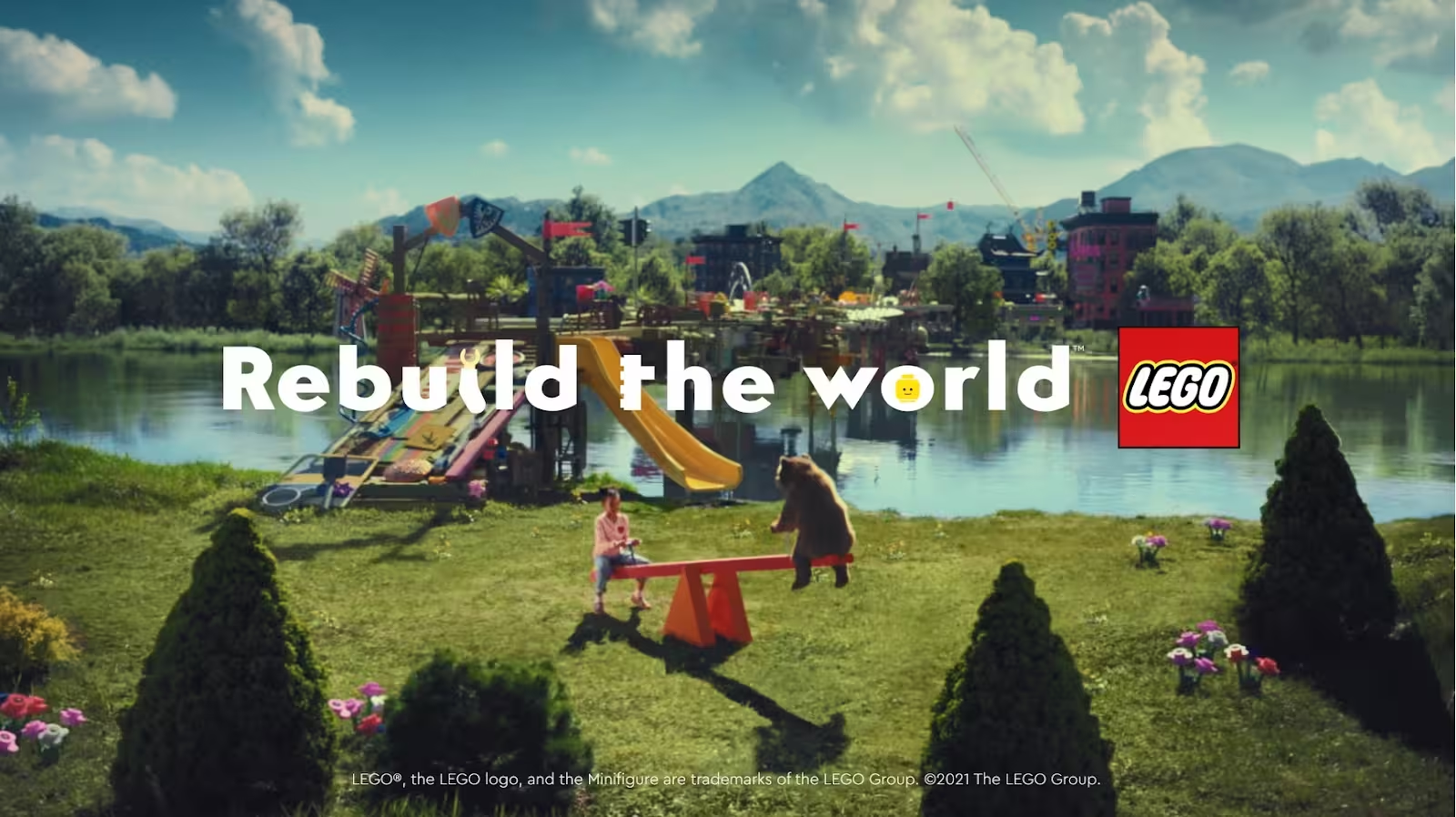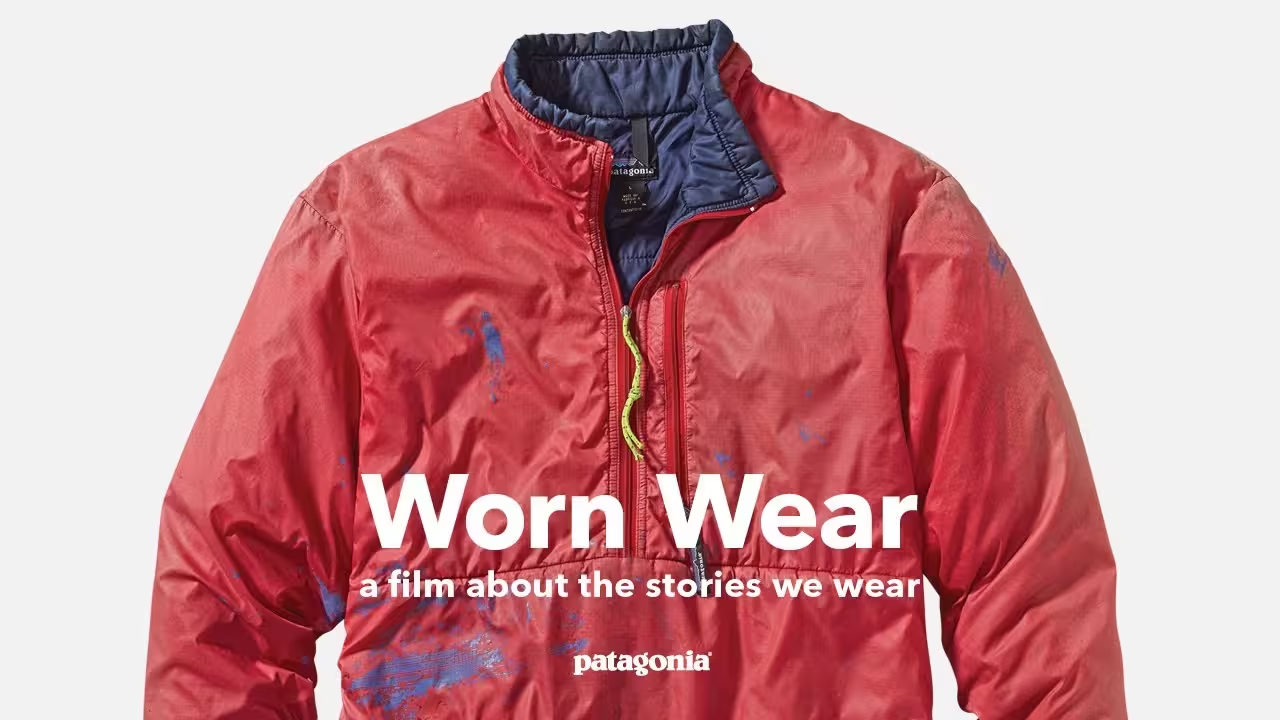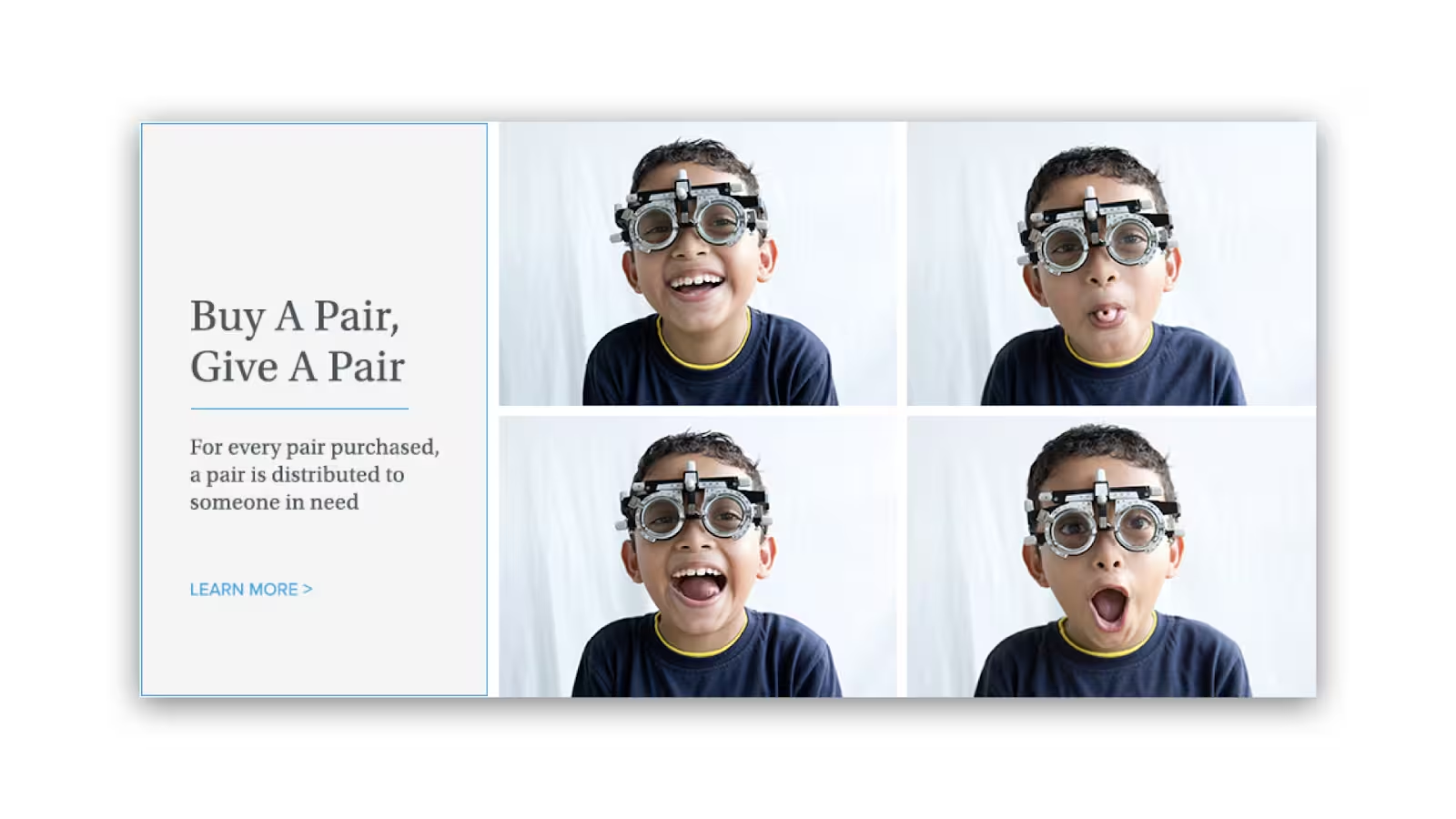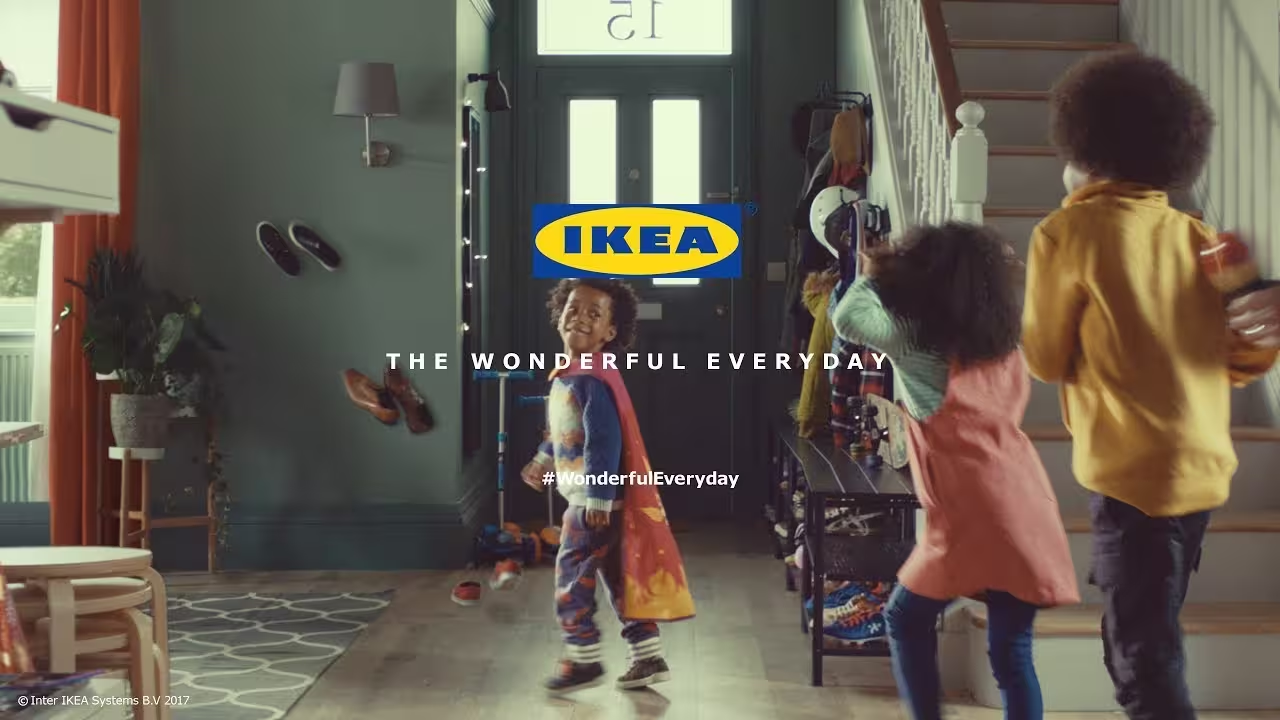
In today’s competitive market, the most successful brands are those that go beyond selling products; they create powerful stories that resonate deeply with their audiences. Storytelling has become a crucial tool for companies seeking to forge meaningful connections, building loyalty that extends beyond the transaction.
By examining the approaches of brands like Google, Disney, Patagonia, and Nike, we can uncover examples of how these companies use brand storytelling to connect with consumers on a personal level. Each of these companies has mastered the art of crafting narratives that not only reinforce their market presence but also inspire and engage, leaving a lasting impact.
What Is the Role of Storytelling in Marketing?
Storytelling in marketing involves using narratives to communicate a brand's message in a way that resonates with consumers. Rather than simply listing features or benefits, it crafts stories that capture emotions, reflect values, and connect with audiences on a human level.
This technique typically frames a relatable scenario, introduces a challenge, and demonstrates how the brand or product provides a solution, often showcasing a transformation or positive outcome. By incorporating characters, emotions, and a narrative arc, storytelling makes the brand’s message more engaging and memorable, tapping into the audience's emotions and enhancing brand recall.
In a competitive market, brand storytelling is crucial for creating deeper connections with customers. It helps build trust, strengthens brand loyalty, and humanizes the brand, showing why audiences should care about its products or services. Ultimately, storytelling inspires action, fosters long-term loyalty, and leaves a lasting impression beyond mere transactions.
15 Case Studies of Brands Storytelling
Storytelling is a powerful tool for brands aiming to stand out and connect with their audiences. Brands that use brand storytelling effectively can craft compelling narratives that forge emotional connections, inspire loyalty, and communicate their values in ways that resonate deeply with consumers.
Next, we’ll explore 15 case studies of brands that have successfully harnessed storytelling. For example, from global giants like Google and Disney to purpose-driven companies like Patagonia, these brands use unique strategies to engage and inspire. Discover how they bring their stories to life and showcase some of the best storytelling in the industry.
LEGO: Inspiring creativity through stories of building and imagination.

LEGO has established its brand around creativity and the joy of building, empowering both children and adults to imagine and create. Known for its iconic interlocking bricks, LEGO promotes the idea that its products are more than just toys—they're tools for education, artistic expression, and innovation, emphasizing limitless possibilities.
LEGO's brand storytelling strategy spans multiple channels, including social media, video content, blogs, and advertising. It frequently showcases builders from diverse backgrounds, highlighting how LEGO products enable everything from simple structures to complex designs. The “LEGO Rebuild the World” campaign encourages individuals to use LEGO bricks to envision a more imaginative future, reinforcing this theme.
A standout collaboration was LEGO’s partnership with Star Wars, which produced short films, games, and product lines that merge LEGO's creativity with the iconic franchise's storytelling. LEGO's robust YouTube presence features animated series, fan stories, and behind-the-scenes content, fostering community engagement and illustrating the endless building possibilities. Through these efforts, LEGO inspires everyone to build their dreams.
Essence of LEGO's Storytelling: Inspiring limitless creativity and imagination through the power of building.
Patagonia: Environmental activism and the narrative of sustainable living.

Patagonia stands out in the outdoor and apparel industry by making environmental activism central to its brand story. With a strong commitment to sustainability, Patagonia promotes a lifestyle that values the natural world, appealing to environmentally conscious consumers and establishing itself as a brand with a purpose beyond profit.
The brand’s storytelling is integrated across various marketing channels, emphasizing its commitment to environmental responsibility. On social media, Patagonia shares stories of activism and conservation projects, exemplified by its “Worn Wear” campaign, which encourages customers to buy used gear and extend its life. This initiative reinforces Patagonia’s sustainability message and is prominently featured on its website and social platforms.
Video content is another powerful storytelling medium for Patagonia. The brand has created award-winning documentaries like Public Trust and Artifishal, which raise awareness about critical environmental issues while educating viewers and inviting them to join Patagonia’s mission. Their advertising, featuring statements like "Don’t Buy This Jacket," urges consumers to rethink unnecessary.
Essence of Patagonia's Storytelling: Leading by example in environmental responsibility and sustainable living.
Red Bull: Stories of extreme sports and pushing human limits.

Red Bull has established itself as a brand synonymous with adrenaline, adventure, and the thrill of pushing human limits. More than just an energy drink, Red Bull represents a lifestyle that celebrates daring feats and extreme sports. By sponsoring high-intensity events and athletes worldwide, the brand crafts a compelling narrative that resonates with its target audience of adventure-seekers.
Red Bull's brand storytelling spans multiple channels, including social media, YouTube, and Red Bull TV, where it showcases breathtaking stunts and extreme sports events. Content ranges from cliff diving and mountain biking to skateboarding and breakdancing, appealing to those who value excitement and resilience. A standout moment was the Red Bull Stratos campaign, featuring Felix Baumgartner’s jump from the edge of space, which captivated millions and embodied Red Bull's "giving you wings" promise.
The brand also shares athlete stories and behind-the-scenes footage on social media, enhancing its authentic connection with fans. Events like Red Bull Rampage and Red Bull Air Race have become iconic in their sports, solidifying Red Bull's image as a supporter of boundary-breaking athletes and activities, reinforcing its core message of adventure and human endurance.
Essence of Red Bull's Storytelling: Pushing the limits of human potential through extreme sports and high-adrenaline feats.
Warby Parker: Making quality eyewear accessible and the story of social good.

Warby Parker disrupted the eyewear industry by making stylish, high-quality glasses affordable and accessible. With a mission rooted in social purpose, they introduced a “buy a pair, give a pair” model, donating a pair of glasses for every pair sold. This commitment to social good is central to Warby Parker’s storytelling, making the brand memorable for its blend of style and impact.
Their storytelling strategy emphasizes transparency, customer empowerment, and social responsibility, using various channels like social media, email newsletters, and a lively blog. With a friendly and approachable tone, they make eyewear shopping feel personal. Their Instagram and Twitter showcase relatable moments and behind-the-scenes content, reflecting the brand's values and creativity.
A standout feature of Warby Parker's approach is the Home Try-On program, allowing customers to try five frames at home for free, which has been widely promoted through engaging video content and influencer partnerships. Their Annual Report adds a fun twist to corporate updates, offering a humorous look at their achievements and challenges. Additionally, their blog, “The Standard,” shares stories on fashion, design, and social impact, reinforcing Warby Parker's commitment to making a difference while providing beloved products.
Essence of Warby Parker's Storytelling: Quality, accessible eyewear with a commitment to social impact, empowering customers and giving back to communities.
TOMS: "One for One" model and the impact of giving back.

TOMS is a pioneer in social entrepreneurship with its impactful “One for One” model: for every pair of shoes purchased, another is donated to someone in need. This mission shapes TOMS' storytelling and establishes the brand as a leader in compassion and social change, transforming it into more than just a shoe company.
TOMS shares its narrative across social media, videos, and its website, focusing on transparency and the real-life impact of their giving model. They often highlight stories of individuals and communities that benefit from their donations, making the impact feel personal and relatable. Campaigns like #WithoutShoes invite customers to share photos of their bare feet, leading to a donation for each post and fostering a sense of involvement in TOMS' mission.
The brand also produces documentaries and shares initiatives on their blog, showcasing their support for projects beyond shoes, like eye care and clean water. By collaborating with influencers who align with their mission, TOMS amplifies its message and encourages customers to join their journey of giving.
Essence of TOMS' Storytelling: Making a difference with each purchase, driven by the “One for One” model that empowers customers to contribute to social good with every TOMS product.
GoPro: User-generated content that tells thrilling adventure stories.

GoPro has established itself as a brand that empowers individuals to capture and share thrilling moments, fostering a community of adventure seekers. Known for its durable cameras designed for extreme conditions, GoPro encourages users to document everything from skydiving to wildlife encounters. The brand's tagline, "Be a HERO," reflects its mission to inspire everyone to be a storyteller through their adventures.
The heart of GoPro's brand storytelling lies in user-generated content, primarily showcased on platforms like YouTube and Instagram. The #GoProAwards campaign invites users to submit their footage for a chance to win cash prizes and be featured on GoPro’s channels. This initiative not only builds a vast library of breathtaking content but also creates a sense of community among passionate customers, emphasizing that anyone can contribute to the brand’s narrative.
GoPro’s YouTube channel serves as a hub for these adventures, featuring playlists like “GoPro HERO Highlights” and “GoPro Animals” that showcase the versatility of their cameras. Additionally, GoPro maintains a blog with tips, tutorials, and community success stories, inspiring users to enhance their filming skills. Collaborations with influencers and extreme sports athletes further enrich GoPro's storytelling, making the brand relatable and aspirational for its audience.
Essence of GoPro's Storytelling: Harnessing user-generated content to create a dynamic, community-driven narrative that celebrates thrilling adventures and inspires people to explore and capture their world.
Disney: Weaving magic and imagination into every brand interaction.

Disney is a master at storytelling, creating immersive worlds that enchant audiences of all ages. With its iconic characters and fairy-tale narratives, Disney crafts experiences that allow people to escape reality, emphasizing universal themes of love, courage, and friendship. The magic of Disney resonates through animated films, theme parks, merchandise, and its streaming service, Disney+, ensuring that every interaction feels like a continuation of its enchanting narratives.
One standout campaign, #ShareYourEars, invited fans to post pictures wearing Mickey Mouse ears, with Disney donating proceeds to the Make-A-Wish Foundation for each post. This initiative showcased Disney’s ability to connect its brand with community goodwill, allowing fans to feel part of the “magic” while supporting a worthy cause.
Disney’s theme parks further bring its stories to life, allowing fans to interact with beloved characters and explore magical lands. On Disney+, the company curates exclusive shows like The Mandalorian and original films, continually expanding the Disney universe. Through various channels, Disney nurtures its brand storytelling, connecting generations of fans and ensuring that the magic never fades.
Essence of Disney's Storytelling: Creating immersive, emotionally resonant experiences that bring stories to life, inspiring people to believe in magic and connect through imagination.
Tesla: The narrative of innovation and the future of sustainable energy.

Tesla embodies technological innovation and a bold vision for a sustainable future, focusing on its mission to accelerate the transition to sustainable energy. With electric vehicles and renewable energy solutions, Tesla represents modernity, environmental consciousness, and groundbreaking advancements in high-performance products.
The brand's storytelling extends beyond traditional marketing, with CEO Elon Musk often at the forefront, sharing updates and visions through social media, live-streamed product launches, and media coverage. This approach creates excitement and transparency around Tesla's innovations, keeping audiences engaged with its narrative of progress.
One standout example of Tesla's storytelling is its Referral Program, which rewards owners for referring new customers with perks like early feature access and free cars. This initiative builds a community of brand advocates committed to Tesla’s mission, while features like Autopilot and Full Self-Driving reinforce its focus on a sustainable, autonomous future. Through this tech-driven narrative, Tesla positions itself as a pioneering force for a greener world, inspiring customers to view their purchases as part of a larger mission.
Essence of Tesla's Storytelling: A visionary pursuit of sustainable energy solutions, combining innovation and technology to inspire a greener, autonomous future.
IKEA: Home is where the heart is—stories of real homes and real people.

IKEA’s brand storytelling revolves around the idea that home is a personal, evolving space for everyone. With its affordable and functional furniture, the brand highlights real homes and authentic moments, connecting its products to the everyday lives of customers. IKEA emphasizes that everyone deserves a comfortable and stylish home without breaking the bank.
Rooted in simplicity and relatability, IKEA showcases diverse home setups across different cultures, often featuring customers' own spaces in its campaigns. This focus on real people using IKEA products fosters an emotional connection with audiences. The brand utilizes various marketing channels, including social media, to share customer-inspired room setups and DIY ideas, making its messaging feel relevant and meaningful.
One notable campaign, “The Wonderful Everyday,” emphasizes small yet significant moments at home, such as family dinners or cozy evenings. IKEA also brings its storytelling offline through catalogs and showrooms, where customers can explore different room styles and layouts. This hands-on approach transforms shopping into a journey of design inspiration, reinforcing IKEA’s mission to create accessible, stylish homes that feel uniquely personal.
Essence of IKEA’s Storytelling: Making home functional, stylish, and affordable for real people with real lives.
Google: "Year in Search" videos that capture the human experience and global events.

Google’s “Year in Search” videos have become an annual tradition, reflecting the essence of each year through the searches that defined it. By showcasing global events, emotions, and cultural moments, Google tells a powerful story about what humanity cared about most. Each search represents a person seeking answers, comfort, or inspiration, positioning Google as more than just a search engine—it’s a mirror of the world’s collective experiences.
Each video is organized around relatable themes, such as resilience, hope, and unity, capturing a tapestry of the year’s highs and lows. The format blends clips from significant world events with personal moments that people searched for, making the narrative deeply engaging. Google shares these videos across various platforms, creating a sense of unity and shared humanity as viewers reflect on the moments that resonated with them.
A notable example is the 2020 video, which opened with the question “Why?”—a reflection of the year marked by the COVID-19 pandemic and social justice movements. This emotional storytelling resonated widely, encapsulating the struggles and resilience of that tumultuous time. Through “Year in Search,” Google transforms data into a narrative that reinforces its role as a trusted companion, helping people navigate their curiosities, fears, and dreams while capturing moments that truly matter.
Essence of Google’s Storytelling: Reflecting the world’s collective experiences and emotions through the power of search.
Nike: Equality campaign—telling stories of athletes breaking barriers.

Nike’s Equality campaign showcases the brand’s commitment to social justice and the belief that sport can drive positive change. By sharing the stories of athletes who break boundaries and challenge stereotypes, Nike emphasizes that “If we can be equal in sport, we can be equal everywhere.” This campaign goes beyond promoting products; it advocates for inclusion, diversity, and unity, inspiring people to overcome limitations and strive for greatness.
The campaign focuses on real athletes—both professionals and everyday heroes—who have made a difference in their communities by standing up for equality. Through ads, social media, and video content, Nike delivers a powerful narrative that resonates with diverse audiences. An iconic commercial featuring stars like LeBron James and Serena Williams highlights moments of perseverance and unity, reinforcing the message that “The ball should bounce the same for everyone.”
Nike further amplifies its Equality message on social media with hashtags like #Equality, encouraging followers to share their own stories of breaking barriers. By partnering with organizations focused on social justice, Nike makes its advocacy tangible and actionable. Through the Equality campaign, Nike champions a vision of a society where everyone has an equal chance to succeed, positioning itself as a catalyst for change beyond just a sportswear brand.
Essence of Nike’s Storytelling: Empowering individuals to break barriers, championing equality on and off the field.
Ben & Jerry's: Advocating for social justice through impactful storytelling.

Ben & Jerry’s is famous for its ice cream and its commitment to social activism, using storytelling to advocate for causes like climate change, racial justice, and LGBTQ+ rights. By focusing on issues that resonate with its customers, the brand positions itself as a leader in progressive values and meaningful conversations, making activism a core part of its identity.
The company takes a bold and authentic approach, often tackling topics that many corporations avoid. Its campaigns span various platforms—website, social media, packaging, and events—reflecting a commitment to a fairer, more inclusive world. For example, the “Justice ReMix’d” campaign, created with the Advancement Project, raises awareness about criminal justice reform while contributing a portion of profits to grassroots efforts. This initiative emphasizes the human side of the issue through impactful storytelling, videos, and dedicated packaging.
Ben & Jerry’s also engages its audience with blog posts, videos, and advocacy statements, particularly during significant social movements. Their transparency reinforces credibility, making clear their stance and actions. Flavors like “Empower Mint” and “Pecan Resist” serve as symbols of their advocacy, allowing the brand to weave its message into unexpected places. This unique storytelling approach has cultivated a loyal following of customers who actively support Ben & Jerry’s social justice initiatives.
Essence of Ben & Jerry’s Storytelling: Championing social justice with an authentic voice that inspires action and drives awareness.
Harley-Davidson: The rebel spirit and the freedom of the open road.

Harley-Davidson’s storytelling captures a spirit of rebellion, independence, and freedom, representing more than just motorcycles—it embodies a lifestyle of adventure and individuality. Each campaign and interaction resonates with those who cherish freedom and self-expression, fostering a community of dedicated riders who view owning a Harley as part of their identity.
The brand engages customers as members of a lifestyle tribe through striking visuals and emotionally charged content. Its “All for Freedom. Freedom for All” campaign exemplifies this, showcasing diverse riders united by their love for the open road. By highlighting personal stories and powerful imagery, Harley makes its message relatable to a wider audience while staying true to its roots.
Harley-Davidson also leverages user-generated content, sharing real riders' journeys on social media, which strengthens the sense of brotherhood among its community. Events like Harley Owners Group (HOG) rallies enhance this connection, allowing riders to experience the brand’s ethos of freedom and camaraderie firsthand. Through these storytelling strategies, Harley-Davidson is not just selling motorcycles but promoting an iconic lifestyle deeply rooted in the biker culture.
Essence of Harley-Davidson’s Storytelling: Embracing the rebellious spirit and celebrating freedom, creating a lifestyle that resonates with individuality and adventure.
Netflix: Showcasing the power of entertainment through personalized content recommendations.

Netflix has transformed entertainment by personalizing stories for each viewer through a powerful recommendation algorithm. This technology analyzes user preferences and past choices, making Netflix feel like a platform that truly understands what audiences want. This creates a strong connection that keeps viewers returning for more.
By leveraging data-driven insights, Netflix tailors its offerings to a wide range of tastes, from niche genres to popular blockbusters. Its “Because You Watched…” feature provides examples of this strategy, guiding viewers to related content that aligns with their interests. This approach positions Netflix as a personal curator, simplifying the process of finding something enjoyable to watch.
Netflix also produces original content aimed at specific audiences, with hits like Stranger Things and The Crown fostering dedicated fan bases, while regional shows like Money Heist broaden its global appeal. By engaging audiences on social media with character highlights and behind-the-scenes content, Netflix extends its storytelling beyond the screen, creating a feedback loop that makes viewers feel valued. This personalized approach turns passive watching into an immersive journey, redefining viewer engagement.
Essence of Netflix’s Storytelling: Personalized entertainment that curates a unique journey for each viewer, enhancing the power of stories through tailored recommendations.
The North Face: Stories of exploration and the great outdoors, inspiring adventure.

The North Face’s brand storytelling revolves around a passion for exploration and the excitement of venturing into the unknown. Beyond high-quality outdoor gear, the brand calls people to push their limits and immerse themselves in nature. By promoting resilience, courage, and environmental appreciation, The North Face serves as a powerful motivator for outdoor enthusiasts.
Centered on themes of exploration and stewardship, The North Face connects its products to meaningful experiences and personal growth through nature. Its narratives are woven across social media, video content, blogs, and ad campaigns, resonating with those seeking adventure. The iconic “Never Stop Exploring” campaign highlights stories of athletes and everyday adventurers, positioning The North Face not just as a gear provider but as a lifestyle choice for exploration lovers.
Rich in user-generated content, The North Face fosters a sense of community and inclusivity through initiatives like “Walls Are Meant for Climbing.” The brand also champions environmental awareness, encouraging customers to protect the landscapes they cherish. Through these storytelling strategies, The North Face has become synonymous with adventure, inviting customers to see each purchase as an investment in their own explorations.
Essence of The North Face’s Storytelling: Inspiring the adventurous spirit by celebrating exploration and promoting a deeper connection with the natural world.
Tips for Incorporating Storytelling in Your Brand
Here are some practical tips to help your brand effectively implement storytelling and create meaningful connections with your audience. For example, by leveraging the power of narrative, you can enhance engagement, build trust, and differentiate your brand in a competitive landscape, ensuring you deliver the best storytelling experience possible.
1. Identify Your Brand’s Unique Story
Start by defining what makes your brand unique. Consider your origins, values, and mission, and reflect on pivotal moments that have shaped your journey. Your brand story should showcase what differentiates you from competitors, focusing on not just what you do, but why you do it. This narrative forms the foundation for all storytelling efforts, creating a relatable identity that resonates with your audience.
2. Know Your Audience and What Resonates with Them
Understanding your audience is crucial for effective brand storytelling. Research their preferences, pain points, and interests to identify the types of stories that will resonate. Utilize customer surveys, social media listening, and analytics to gather insights. Tailor your narratives to address these factors, ensuring your stories speak directly to your target demographic.
3. Use Multiple Platforms to Tell a Cohesive Story
Leverage various channels - social media, blogs, videos, and emails - to share your brand story engagingly. To repurpose visual content seamlessly between formats, you can combine your storytelling assets into engaging sequences using a photo slideshow app that showcases product images, behind-the-scenes shots, and testimonials in one place. Each platform can enhance different aspects of your narrative, creating a richer experience. Ensure that your messaging is cohesive across all platforms, reinforcing the same themes and values to strengthen recognition among your audience.
4. Keep the Narrative Consistent and Authentic
Authenticity is key in brand storytelling. Your narrative should remain consistent and genuinely reflect your brand’s values. Focus on real experiences and emotions that can foster trust. Share behind-the-scenes stories or customer testimonials that add depth to your narrative, making it relatable and credible.
5. Measure the Impact of Your Storytelling Efforts
To understand the effectiveness of your brand storytelling, implement metrics to measure engagement, brand awareness, and customer loyalty. Analyze social media interactions, website traffic, and conversion rates to gauge how well your stories resonate. Qualitative feedback can provide valuable insights into the emotional impact, helping you refine your brand storytelling strategies for better results.
Conclusion
Incorporating storytelling into your brand strategy is a powerful way to connect with your audience and differentiate yourself in a competitive marketplace. By identifying your brand’s unique story, understanding your audience, and using multiple platforms, you can create a cohesive and engaging narrative. Maintaining authenticity and consistency in your brand storytelling builds trust, while measuring the impact of your efforts allows for continuous improvement.
As you explore the art of storytelling, remember that every brand has a story worth sharing. For example, brands like Nike and Patagonia have effectively used their narratives to foster deeper connections with their audiences.
Start crafting your story today to drive meaningful engagement. Take the first step: reflect on your brand’s journey and begin weaving your unique narrative into your marketing efforts. Your audience is waiting to hear your story and experience the best brand storytelling you have to offer!
What is your current returning customer rate?
Want to close the gap?
FAQ
What does storytelling mean in branding?
Storytelling in branding is the practice of using a narrative to connect emotionally with customers, communicate brand values, and build loyalty beyond just products.
What’s an example of a brand using storytelling well?
Patagonia shares its environmental activism and values in nearly every campaign, reinforcing its brand identity and deepening customer trust.
Why is storytelling effective in marketing?
It helps people relate to the brand, remember its message, and trust it more. Stories evoke emotions, which drive engagement and long-term loyalty.
How do successful brands use storytelling?
- Showcasing founder journeys- Sharing customer success stories- Highlighting social or sustainability missions
Trusted by over 15000 brands running on Shopify








